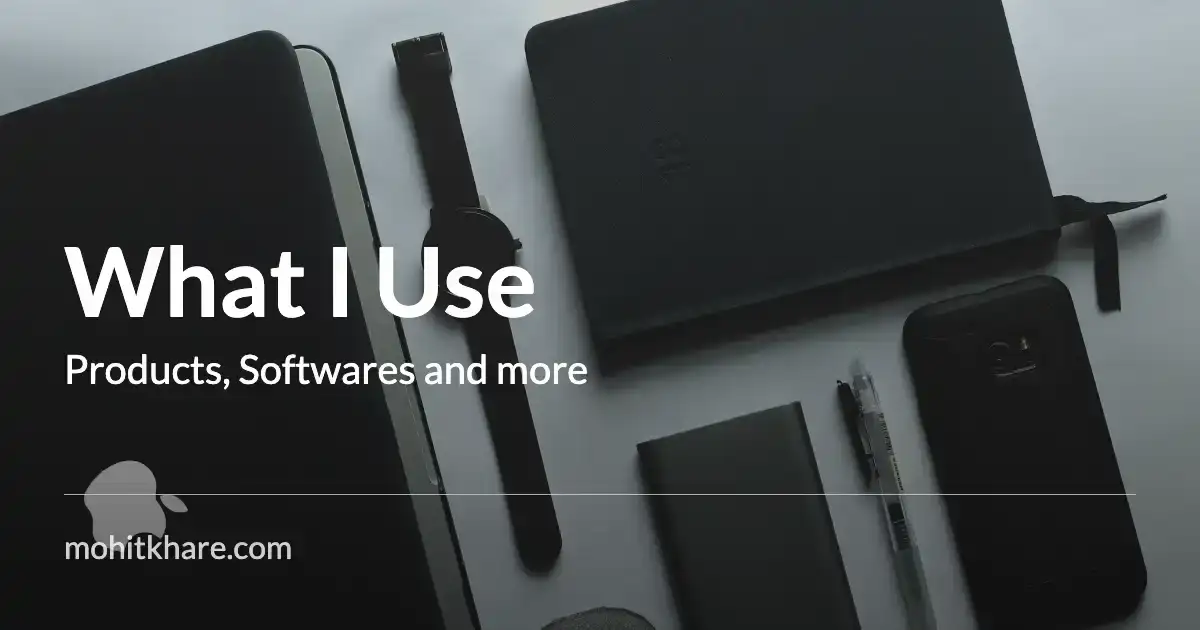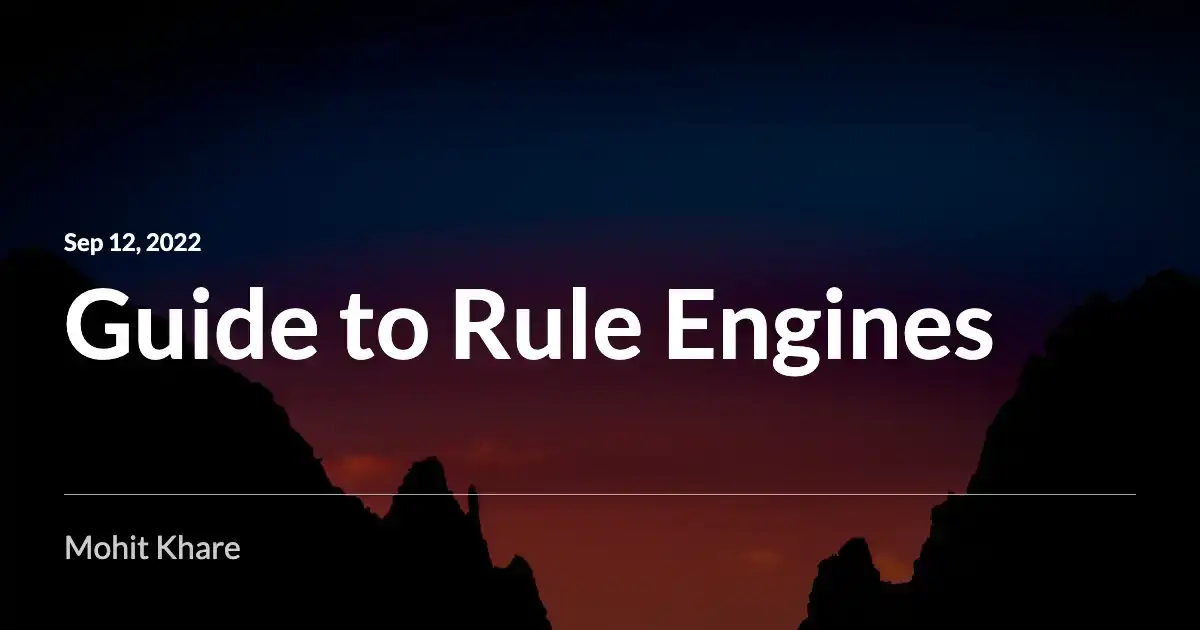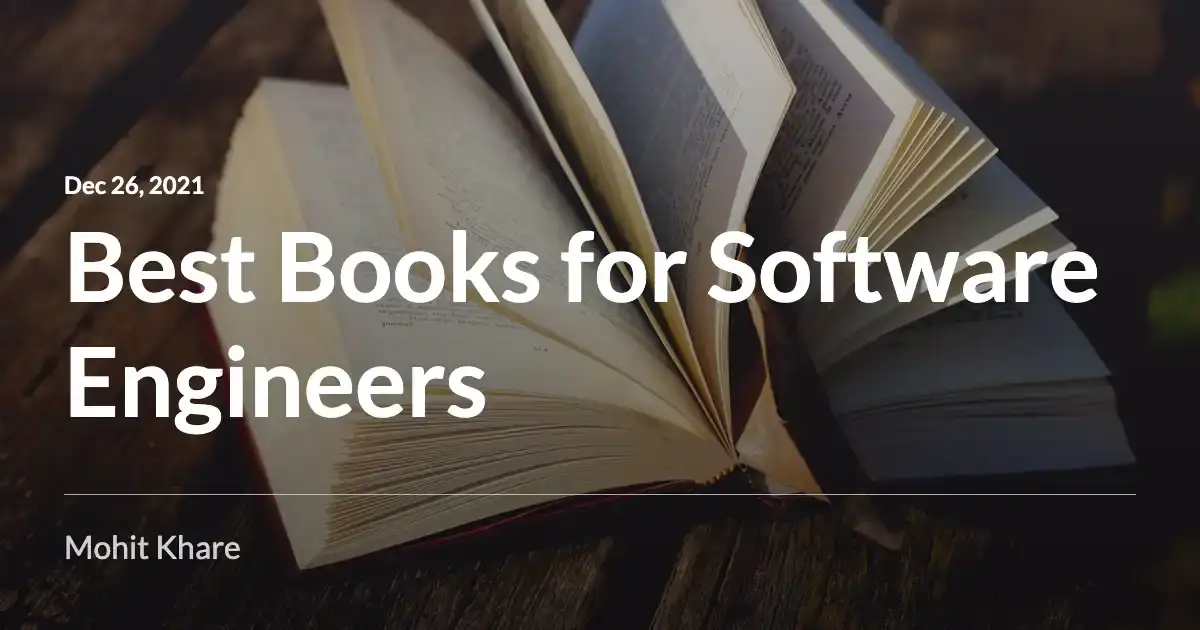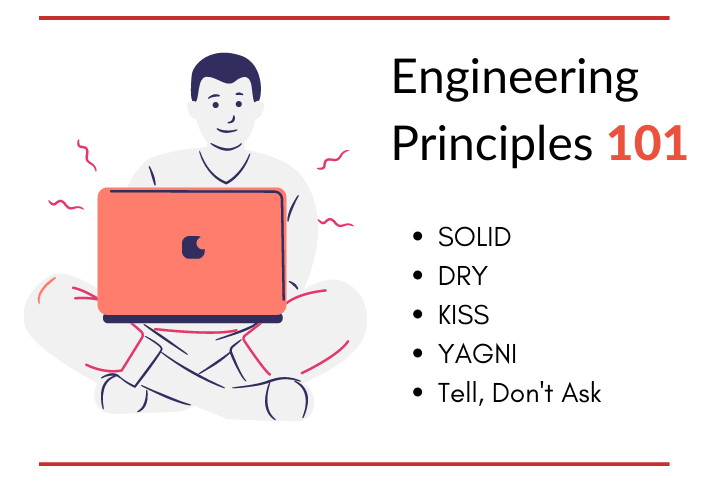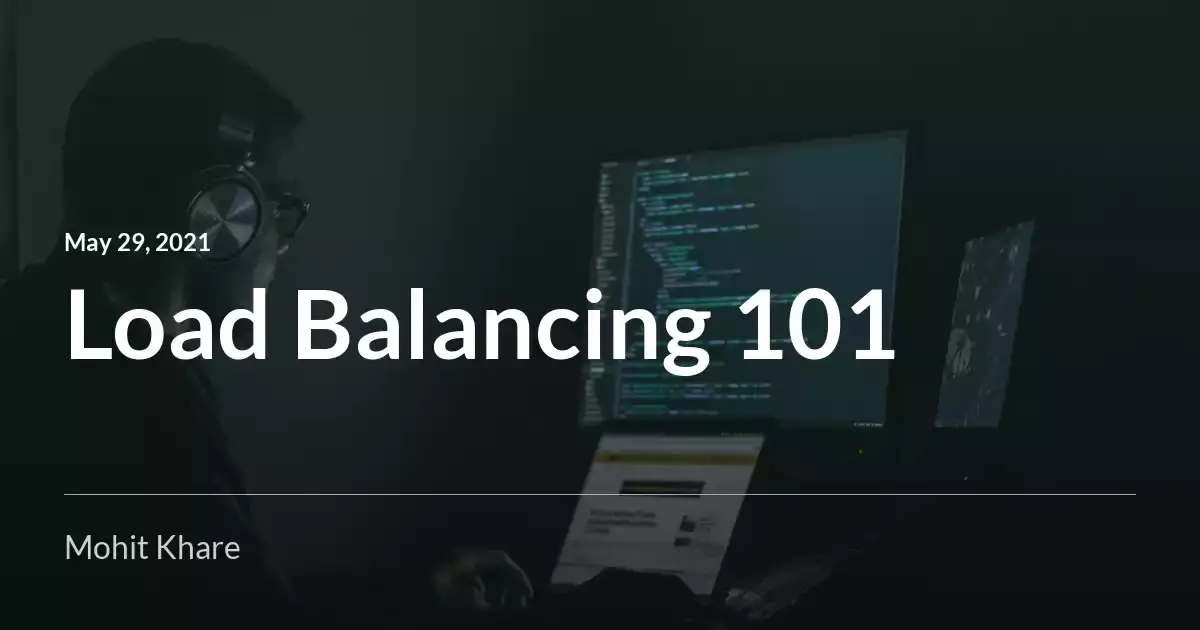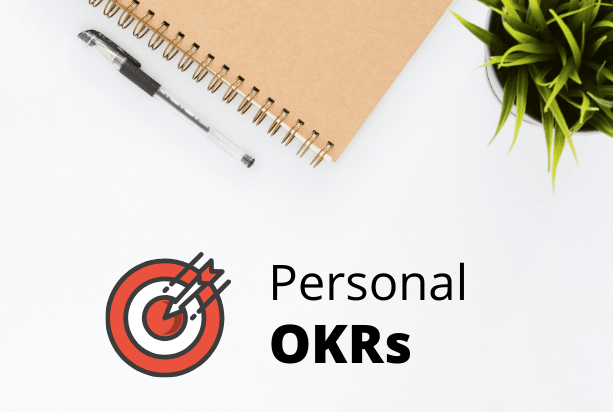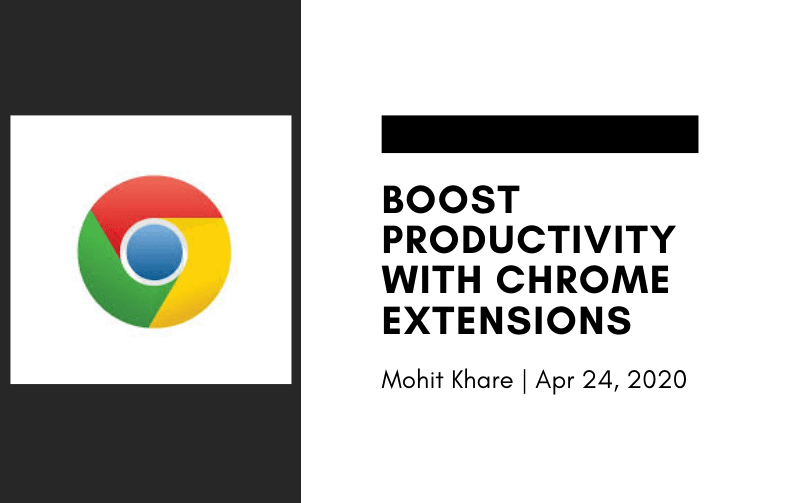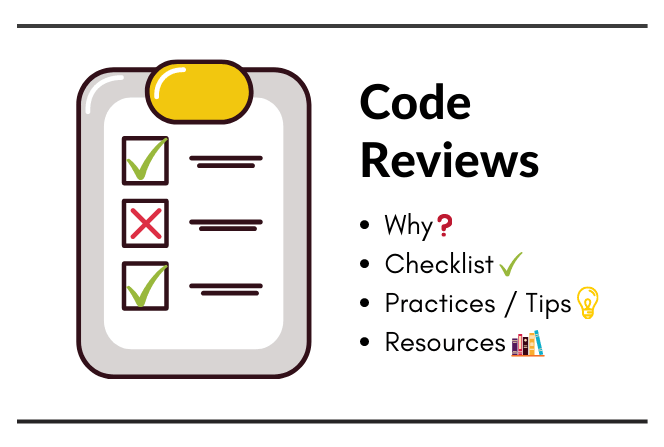Book Notes : Lean B2B
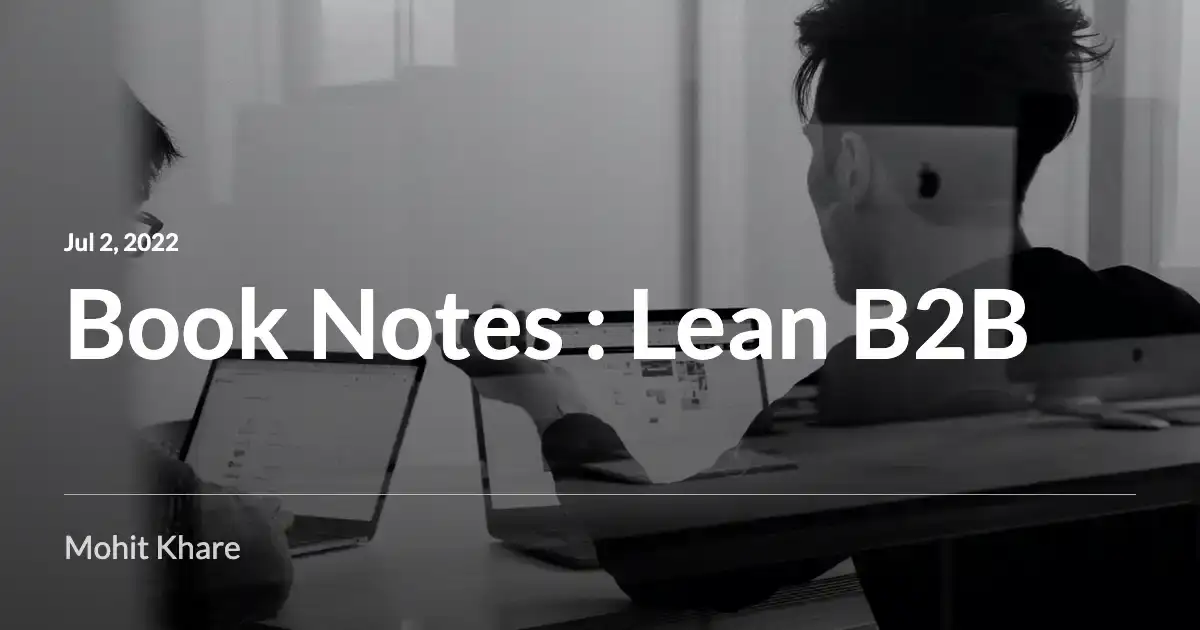
Get latest articles directly in your inbox
These are highlights/notes from book “Lean B2B: Build Products Businesses Want” by Étienne Garbugli. This book is a must read for all wanna be entreprenuers. It covers areas around building business in enterprise space - how to assess markets, build MVP, hiring the right team and selling your product. The author also explains major challenges faced by B2B entrepreneurs.
These are my personal notes/highlights which I took while reading. I would recommend reading the book, but in case you are short on time - just skim through these notes 😊
In case you are looking for book recommendations! Check Learnshots
The B2B Opportunity Space
- In B2B, you seek to understand the market before finding a product or a solution; the entrepreneur’s vision is second to his ability to understand the needs of the customers. Customers are driving the show; entrepreneurs need to focus entirely on what the business wants.
- In B2B, if you can’t understand the inner workings of an organization you’ll never be able to sign large customers. You need relationships. Prospects buy from people they know and trust.
- "Clients will feel they have a relationship with you only when they believe that you understand their needs, their situation, their vision, their constraints, their corporate goals and their career goals. – Ken Morse”
- Finding out what businesses want requires deep relationships.
While the enterprise can be boring as hell, the whole thing is paved with gold.8 – Alex Williams
- There are three critical areas of differences between B2B and B2C customer development.
- Return on Investment (ROI)
- Client Relationship
- Decision-Making Process.
- There are three main reasons why businesses buy technology
- To increase revenue
- To decrease costs
- To increase customer satisfaction.
- A B2B transaction is, by definition, an investment; an investment in future profitability, cost reduction, timesaving, productivity or customer satisfaction.
- To succeed in B2B, entrepreneurs need to build deep relationships with a relatively small number of companies.Trust and stability are essential factors.
- it’s necessary to understand here that validation in B2B often requires winning over a group of buyers.
- Paths through success are clearer for B2B startups. They’re not easier, but they’re clearer: solve a very painful problem and charge people money to do so.
- Problems worth solving are typically invisible from the outside. Your task will be to get inside the enterprise, understand how the company thinks and find the real problems.
- B2B founders are generally more pragmatic and process-driven. They appreciate predictability and are usually more risk-averse than their B2C counterparts.
Customer Acquisition
The ideal customer is someone that -
- Has a problem
- Is aware of the existence of the problem
- Has already tried to solve the problem
- Is unhappy with the current solution to the problem
- Has a budget to get the problem fixed
"People don’t know what they want until you show it to them” - Steve Jobs
The core theory behind Crossing the Chasm is that customers in any given market belong to one of five groups:
- Innovators
- Early Adopters
- Early Majority
- Late Majority
- Laggards
Finding a beachhead customer — a first customer segment — to get a foot in the market.
- The customer must not be friend or family.
- Friends and family are a false measure of success; they blur your metrics.”
- The best way to find early adopters is through your personal network at one degree of separation.
One of the big challenges for first-time entrepreneurs targeting a new industry is getting enough credibility and visibility to have true business discussions with stakeholders.
Early on, there are five things that entrepreneurs need to demonstrate to be perceived as credible
- Personal Credibility – Do you know what you’re talking about?
- Commitment – Are you in it for the long haul?
- Reliability – Are you doing what you say you’re going to do
- Passion – Do you really care about solving our problem?
- References – Who can vouch for you?
Initially, there are two ways to convince early adopters to meet with you:
- Create interest in your profile or the story of your founding team.
- Create interest in the benefits of the contribution.
The moment that you’re talking about a person’s problems, they’re happy. If you’re there to solve that person’s problem then they’re willing to have that conversation. That’s how you get them to help.
The ideal value proposition is one sentence long - “Think benefits and value, not features."
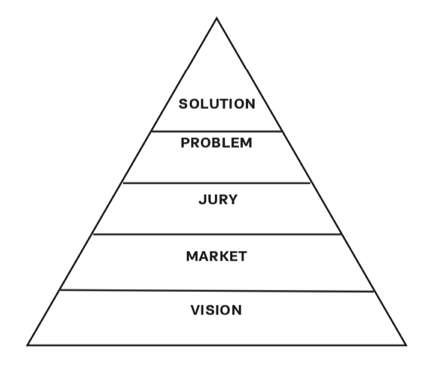
- Your goal with any prospect or customer interaction is to move the relationship forward.
- Prospects entering the sales funnel are called leads. Leads can become ‘qualified’ if:
- They see value in your offer
- They have the budget to buy
- You have access to a decision maker
- There’s a timeline for the process.
- If you are in a hurry to ship or commercialize a product, you will rush through product validation and settle for lower potential problems or opportunities.
Identifying problem
- You should be looking for a big pain or a big gain that can be tied to a budget, a problem that will deliver a big ROI.
- You can’t ask directly what customers want.
- Identify the strongest pains and the most pressing needs.
- Problems that matter have owners who have budgets and a willingness to use those budgets to remove the pain.
- Our goal will be to seek the biggest rewards or largest budgets available and convince the economic influences to transfer spend to your solution.
- Surveys and interviews don’t collect the same type of information. Surveys are good only when you know what questions to ask and what answers to suggest. Interviews are about exploration.
- Don’t rush problem discovery. Don’t settle for a low-impact problem.
- If you are in a hurry to ship or commercialize a product, you will rush through product validation and settle for lower potential problems or opportunities.
- As you share back the information collected with the members of your team, it’s normal to have the urge to jump to conclusions and start thinking about solutions. Resist the temptation and take a step back. Be sure to put time between data collection and data analysis.
- Five ways to prioritize (score) problems
- By frequency – Is that pain shared by a lot of early adopters?
- By intensity of pain – Is this a painful problem? Are prospects actively trying to solve it?
- By budget availability – Is this the pain of a buyer? Have budgets already been assigned?
- By impact – What kind of ROI can you expect if you solve this problem? What impact will it have on the organization?
- By market education – Is there competition? Would you need to create a completely new paradigm?
- Choosing a problem to solve is one of the most critical decisions in the life of a startup.
- We can tell that a problem is painful if -
- The same person repeats it frequently with passion during the interview.
- The company is actively trying to solve the problem or has assigned a budget to solve the problem
- The problem is frequently listed in the top five of your early adopters
- You must understand the organizational impact of your solution. Will only one person be impacted? A whole department? The whole company? How much time can be saved? How much more value can be generated?
- It’s really important not to create a product without any competition.
- The first customers you seek should genuinely -
- Be willing to spend money for your product
- Benefit from your solution
- Agree to endorse your company with a case study.
- Don’t start free if your goal is to make money.
- Most successful B2B entrepreneurs ask to get paid up-front.
- The only true way to validate a revenue model is by asking a prospect to sign a contract and pay money for a solution.
- Always push for the highest form of endorsement possible.
- Using the company name and logo on collateral
- Writing a testimony
- Publishing a press release about the deal
- Writing a blog post or technical paper about the experience
Building a MVP
An MVP is the quickest thing you can make to learn about your riskiest hypotheses; it can be anything from mockups, low-fi wireframes to a fully functional product.
With your early demo, you want to maximize impact. For this reason, an MVP also has to be desirable
What is the smallest feature set prospects will pay for in the first release?
The three things that your MVP must say about your company are:
- You can solve this problem
- You can provide the value they seek
- You’re better than the current solution
With MVPs, less is more
The scope of your MVP should be no more than the two or three core features that will solve the customer pain.
A complete product is not required to start selling. You need just enough to communicate the vision and benefits of your solution.
Initially, you must be laser-focused on a single market, a single problem and a single customer profile.
Startups that solve real business problems always have to replace some kind of solution.
Think less about the direct competitors and more about how your solution can fit in their technology mix.
A startup should start answering the hardest questions and validating the riskiest parts of its product and business model first.
Three main types of features required to develop a product people want to use.
- Mandatory features are the must-haves of a new product like a login or a user profile.
- Linear features are the core features of your product. They’re the two or three features that your customers really pay for.
- Exciter features are those that are not expected by customers, but are perceived as adding value.
User buyers typically care about how your solution will be used in the day to day, and whom it will affect.
They want to know about specific use cases, features and processes.
A revenue model describes how a business generates revenue streams from its products and services. There are many alternate B2B revenue models to explore
- Commerce and retail
- Subscriptions and usage fees
- Data
- Transactions/Intermediation
- Freemium
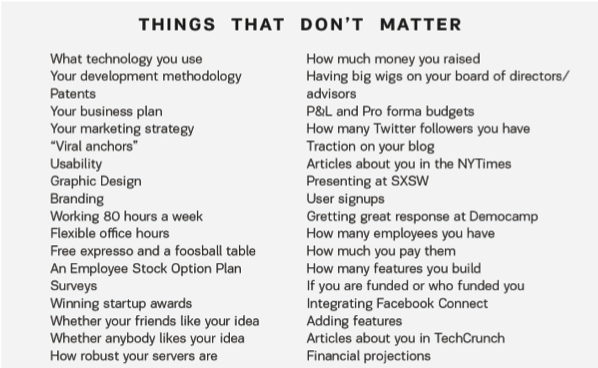
Solution Rule
- Your solution must be at least two times faster, two times better and two times cheaper than the known alternatives.
Value (Actual or Perception of) – Risk (Perception of) = Implementation Score- As an entrepreneur, remember that discounts or added services are a marketing investment.
- A better approach to discounting the price is usually to offer more services.
- Provide extra service or free support
- Give early access to new functionalities
- Give a full feature account without increasing the cost
- Give custom features
- Guarantee benefits by giving customers a 30- or 60-day risk-free trial
- Introduce a money-back guarantee
- If you offer discounts, make sure they’re in exchange for endorsements like case studies or testimonies. Discounts are recognition, not bribes.
Designing your sales pitch
- Your pitch deck should be no longer than ten slides with large font and bullet points.
- It should contain following information
- A definition of the problem
- A visual of the solution or a link to a demo
- Benefits or a quantified expectation of ROI
- Underlying magic
- Team members and/or the company vision.
- A rough idea of the pricing and the agreement
- Call to action to provide ways to act beyond the pitch
- Businesses are not just buying products and features, they’re also buying your philosophy and your approach to solving their problem. In other words, they’re buying your story.
- Your plan is not to make money from the first clients. Money will be there later, so being generous with your early clients is an excellent idea.
- Getting your offer rejected is part of the learning process. The key thing with rejection is to understand why and to find a way to counter that objection.
- Was the price too high?
- Is there a freeze on expenditures?
- Was it not a business priority?
- Is the product not enough?
- Did the proposition not sell enough ROI?
- Was it not the right time?
- Are they committed with the competition?
- Depending on your business type, Product Market fit will be a mix of:
- Revenue
- Engagement
- Growth
AARRR model
- AARRR model (Startup Metrics for Pirates75) to help startups understand the customer lifecycle.
- In his model, a customer is first Acquired, then Activated, Retained, used for Referrals and converted into Revenue.
- Big part of P-M fit is covered by the activation and retention — also known as engagement of users.
- Engagement (not revenue) is the greatest predictor of growth, the third P-M fit engine.
Sean Ellis Test
Sean Ellis Test to validate that a company has Product-Market fit. In his model, a product that would leave more than 40% of its users disappointed if it disappeared has P-M fit.
- Validate the pilot or product metrics
- Time to activation– How long does it take for end-users to start using your solution?
- Frequency of use – How often do they use the solution? Are there periods of higher activity?
- Length of use – How much time do they spend using the solution?
- Productivity – How long does it take to complete the main tasks?
- Enjoyment – Do users enjoy using the solution?
- Support requests – How many email requests or support phone calls are being generated?
- Feature requests – How many features are being requested?
- Availability – Is the solution stable and available at all time?
- Feature usage – Are there features that are not being used?
Pivoting
- A pivot is a structured course correction designed to test a new fundamental hypothesis about the product, strategy, and engine of growth.
- To validate quickly, you must pivot fast and not get caught in a model that won’t allow you to build a business.
- In The Lean Startup, Eric Ries highlights some of the following pivots as possibilities
- Zoom-in pivot: A feature of the product is so useful that it becomes the whole product.
- Zoom-out pivot: In the reverse situation, the whole product is included in an even larger product or platform.
- Product value pivot: The product benefits and ROI story did not catch the attention of the stakeholders.
- Value capture pivot: The solution had value, but the revenue or business models were wrong for the customers.
- Channel pivot: Changing the way the technology is brought to market.
- Customer need pivot: The problem solved was not very significant, or money wasn’t available to buy.
- Customer segment pivot: The product attracts real customers, but not the ones you were initially targeting.
- The path to success is rarely a straight line. If you fail, your objective is to always fail forward, adapt and evolve.
When you stop failing you stop being a startup. – Fred Lalonde”
Common challenges B2B entrepreneurs face
- Being Everything
- As an entrepreneur, you must always think about your business focus. Lack of focus kills startups.
- Start with less
- You must find the core value of your solution to find your one or two main features
- You have to think small. You must choose one or two concrete problems to solve and then solve them brilliantly
- Pet Problems - Pet problems are, by definition, problems that only matter to one or a few stakeholders.
- The Curse of Interesting
- Interesting was a false signal - a grey zone. With P-M validation, you want to avoid grey zones and get clear yes or no.
- Explore a larger set of problems. Focus on the real pains and throw away the personal interests.
- Long sales cycles
- As a rule of thumb, the bigger the sale amount, the longer the sales cycle
- Sales cycles will be long no matter what. Focus on your early adopters, optimize and reduce the perception of length of your sales cycle.
- Insufficient Credibility
- Commited Budgets
- Company would love to buy, but unfortunately, the budgets are all committed for the year.
- Do your due diligence. Make sure this is really a problem of budget availability
- One of your objectives should be to shorten feedback loops and reduce dependencies on busy decision makers.
- Remember - In B2B, proximity to customers is key
You have to go where the customer is. – Michael Wolfe
- Recruiting key staff and advisors
- As a founder, you should always be asking yourself: Who in the industry already has the knowledge you seek? Who can you recruit as partner, advisor or employee that could help speed up P-M validation?
The real value of the Lean B2B methodology — if followed properly — is that it creates certainty. No more false positives. No more grey zones.
Fail early, fail often, but always fail forward – John Maxwell
More book summaries
I hope you learned something new. Feel free to suggest improvements ✔️
I share regular updates and resources on Twitter. Let’s connect!
Keep exploring 🔎 Keep learning 🚀
Liked the content? Do support :)


